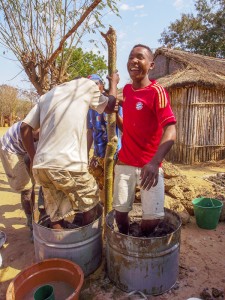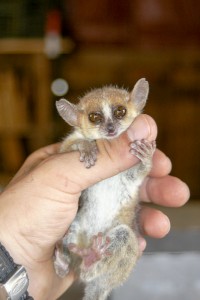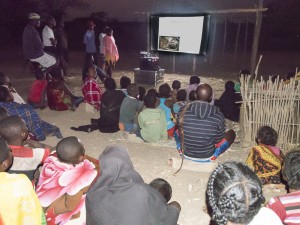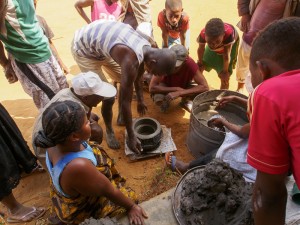What We Do
 Chances for Nature spread, communicate, and promote sustainable natural resource use techniques as well as raise awareness for Madagascar’s extraordinary biodiversity. We achieve these goals through outreach, education and capacity building in small villages in rural Madagascar. Chances for Nature currently focuses many of its efforts in Central Menabe (west Madagascar), but does not limit its education initiatives to just this region.
Chances for Nature spread, communicate, and promote sustainable natural resource use techniques as well as raise awareness for Madagascar’s extraordinary biodiversity. We achieve these goals through outreach, education and capacity building in small villages in rural Madagascar. Chances for Nature currently focuses many of its efforts in Central Menabe (west Madagascar), but does not limit its education initiatives to just this region.
How We Protect Lemurs And Other Wildlife
Our work contributes to protecting lemurs by promoting sustainable use of natural resources. We work in areas which are home to lemur species and so this helps to limit negative impacts on lemur habitat.
What Lemur Species We Protect
 The area where we have focused many of our efforts, in west Madagascar, is home to the largest remaining dry deciduous forest of Western Madagascar.
The area where we have focused many of our efforts, in west Madagascar, is home to the largest remaining dry deciduous forest of Western Madagascar.
This unique ecosystem is home to high floral and faunal diversity, including the world’s smallest primate:
- Madame Berthe’s mouse lemur (Microcebus berthae)
How We Support Local Communities
Chances for Nature works closely with local communities in order to establish new programs that help spread information about how natural resources can be used sustainably in remote and resource-poor communities. The work is done in close collaboration with local communities and involves a partnership with people and elected officials in the areas where Chances for Nature works.
Environmental Education
 We use Malagasy-language multimedia presentations and films to promote sustainable use of natural resources. In 2013, we produced a film designed to illustrate the uniqueness of Madagascar’s biodiversity; the film also explained the consequences of unsustainable use of natural resources and presented three alternative sustainable techniques and behaviors that could be used to improve the lives of local people while reducing natural resource depletion. This film, as well as other multimedia presentations, reached Malagasy communities in 2013 and 2014 through the help of a mobile cinema. This mobile cinema works exclusively through pedal (bicycle) power and thus reaches a large amount of people – even in remote areas without electricity. The cinema was even used to raise awareness and supplement environmental education in several Malagasy schools.
We use Malagasy-language multimedia presentations and films to promote sustainable use of natural resources. In 2013, we produced a film designed to illustrate the uniqueness of Madagascar’s biodiversity; the film also explained the consequences of unsustainable use of natural resources and presented three alternative sustainable techniques and behaviors that could be used to improve the lives of local people while reducing natural resource depletion. This film, as well as other multimedia presentations, reached Malagasy communities in 2013 and 2014 through the help of a mobile cinema. This mobile cinema works exclusively through pedal (bicycle) power and thus reaches a large amount of people – even in remote areas without electricity. The cinema was even used to raise awareness and supplement environmental education in several Malagasy schools.
Presentations have focused on educating Malagasy communities about:
- SRI (Sustainable Rice Intensification)
- Combining fish breeding with rice cultivation
- Self-made ecological stoves (Fatana mitsitsy or Fatapera mitsitsy)
- The benefits of ecological stoves (Fatana mitsitsy)
- Ecologically-friendly charcoal
Ecological Stoves


